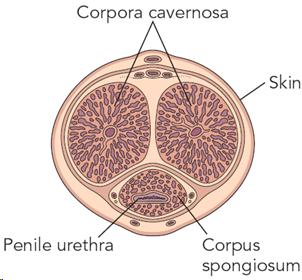Table of Contents
- Female & Male Sexual Anatomy Chapters 3 & 4
- Main Topics
- Embryonic-fetal Differentiation of the External Reproductive Organs
- Homologous Sexual Organs
- Male & Female Sex Organs: What Are They For?
- Female Sex Organs: External Structures
- Female Sex Organs: External Structures
- Female Sex Organs: External Structures
- External Female Genitalia With The Labia Drawn Apart (Vulva)
- Internal Female Sexual Structures
- Female Sex Organs: Internal Structures
- Female Sex Organs: Internal Structures
- Female Sex Organs: Internal Structures
- Male Sex Organs: External Structures
- Male Sex Organs: External Organs
- Male Sex Organs: External Organs
- Internal Side View of the Male Sex Organs
- Male Sex Organs: Internal Structures
- Male Sex Organs: Internal Structures
- Male Sex Organs: Internal Structures
- Male & Female Sex Organs: The Breasts
- Male & Female Sex Organs: The Breasts
- Male & Female Sex Organs: Anus
- Summary
Text and Images from Slide
Male Sex Organs: External Structures
- Penis - Organ through which both sperm and urine pass
- Parts
- Root
- Shaft
- Head (aka glans penis)
- Urethral orifice
- Frenulum
- Shaft contains three parallel <br />columns of erectile tissue
- Corpora cavernosa, crura, urethra
14

Cross Section of the Shaft of the Penis
